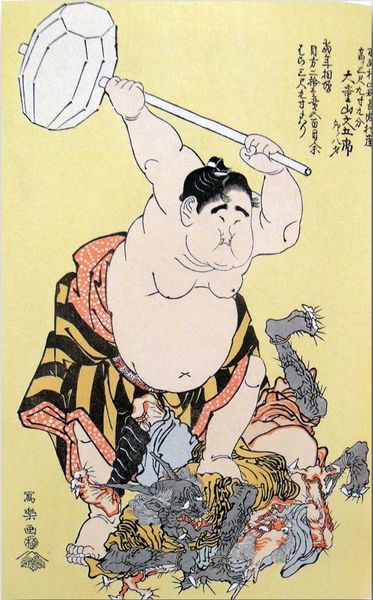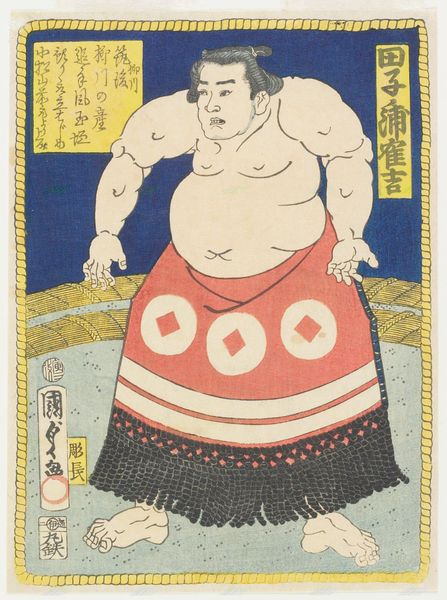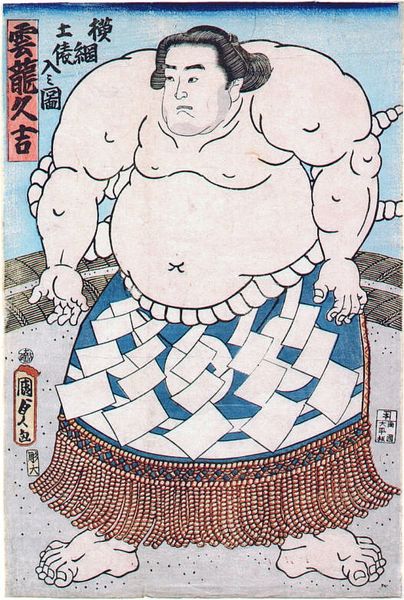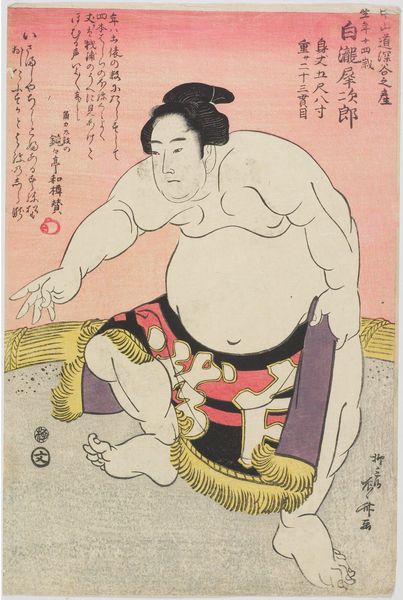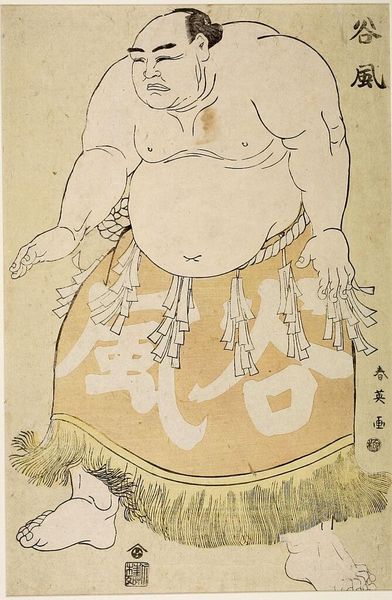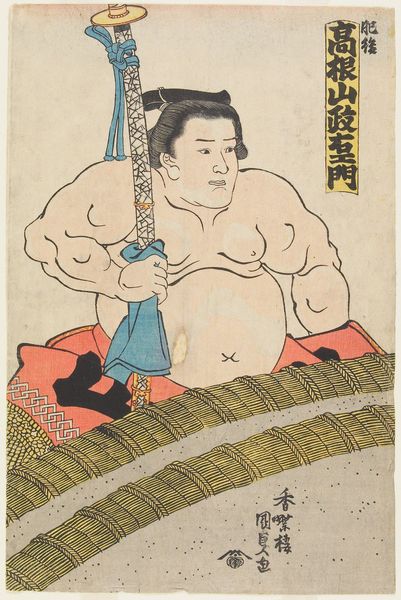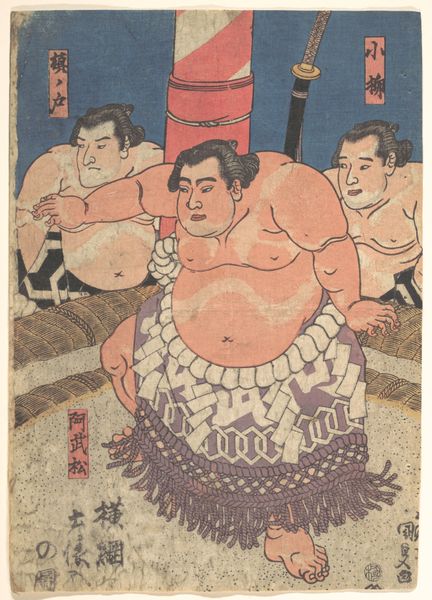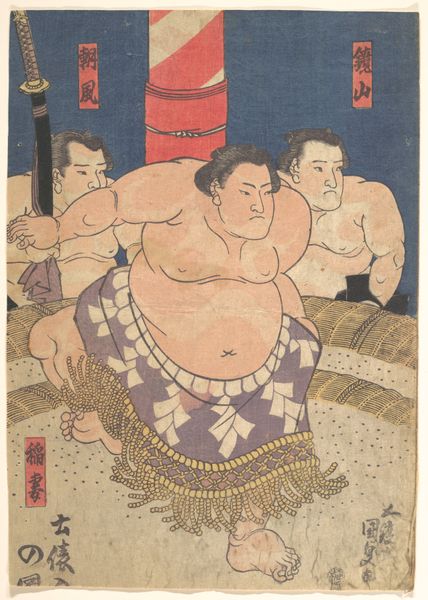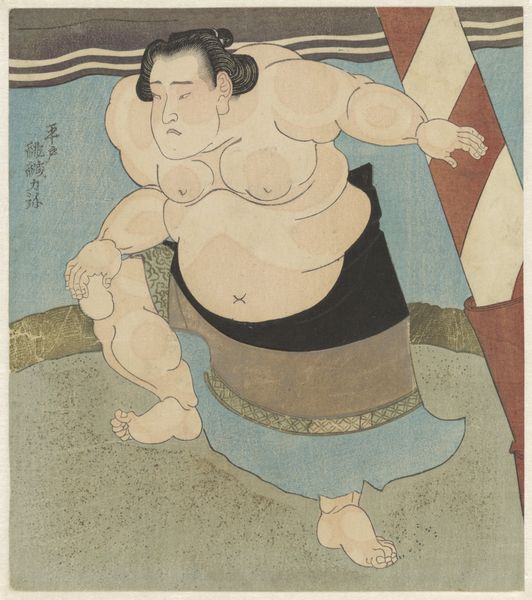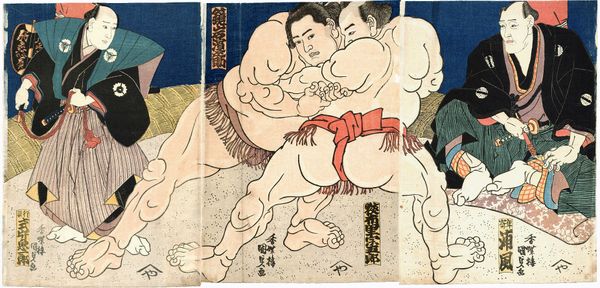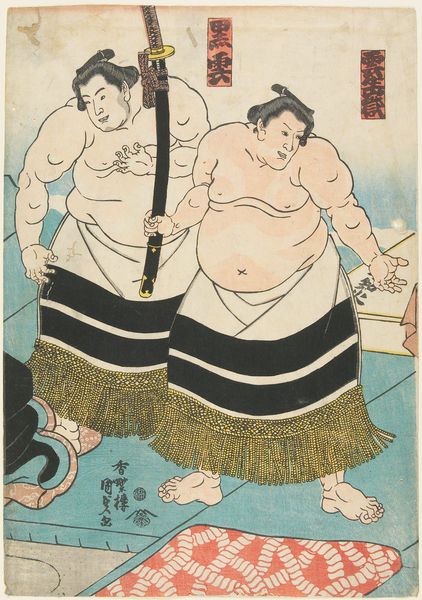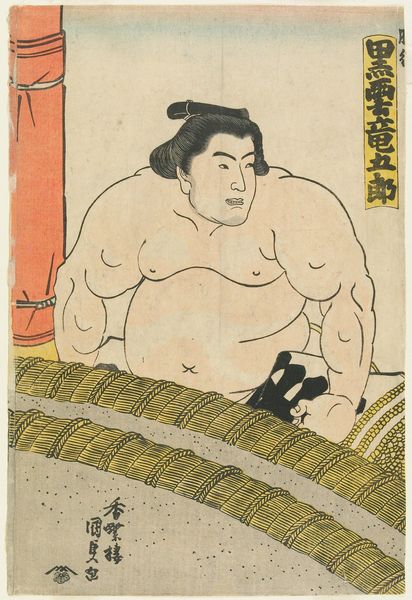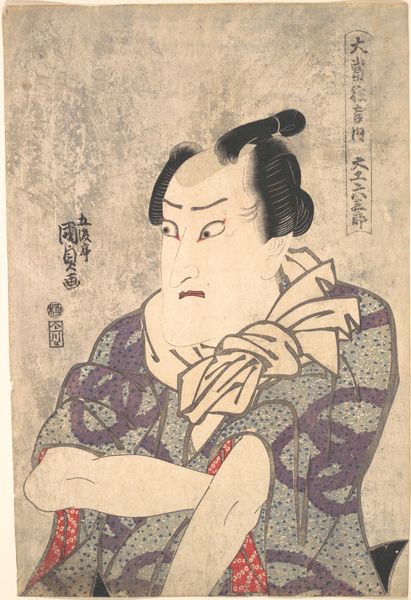
print, woodblock-print
#
portrait
# print
#
caricature
#
asian-art
#
ukiyo-e
#
figuration
#
woodblock-print
#
genre-painting
Copyright: Public domain
Curator: Seven-year-old Sumo Wrestler Daidozan Bungoro, created around 1795 by Tōshūsai Sharaku. It's a Japanese woodblock print. There's something about the bold lines and the figure's exaggerated form that's captivating. What stands out to you? Editor: Well, beyond the striking image itself, I'm interested in how this print engages with ideas about labor and childhood. It’s quite unusual to depict a child as a professional athlete in this manner, wouldn’t you agree? What do you see in the materiality of this piece and how it connects to the society it was made in? Curator: Precisely! Consider the process itself. Woodblock printing, ukiyo-e, was a popular, commercial art form. It wasn't about individual genius but about skilled artisans reproducing images for a wider audience. This image flattens hierarchies. Here, a child laborer, a sumo wrestler, is rendered with the same care and detail as a celebrated actor. This challenges our preconceptions of what's "high" and "low" in art. Notice how the bright red emphasizes the wrestler's skirt – what’s that striking color saying about the materiality? Editor: That's a fascinating way to consider it. The vivid colour, almost garish, points to this intended broader circulation...making the piece very accessible, not an item for the elite only. Curator: Exactly. Ukiyo-e prints like this one reveal a consumer culture developing rapidly in Edo-period Japan. These portraits were products made for a growing urban middle class who consumed images of celebrity and spectacle, turning even child athletes into marketable commodities. So, the means of production, the materiality, it's all deeply intertwined with the social and economic changes of the time. Do you agree? Editor: Yes, absolutely. It's less about the individual and more about the processes and cultural context that shaped its creation and reception. It's been really enlightening to examine it from that perspective. Curator: And that consideration, placing an art work within the broader modes of production and labor, allows for a richer reading of it and similar material produced at the time.
Comments
No comments
Be the first to comment and join the conversation on the ultimate creative platform.
